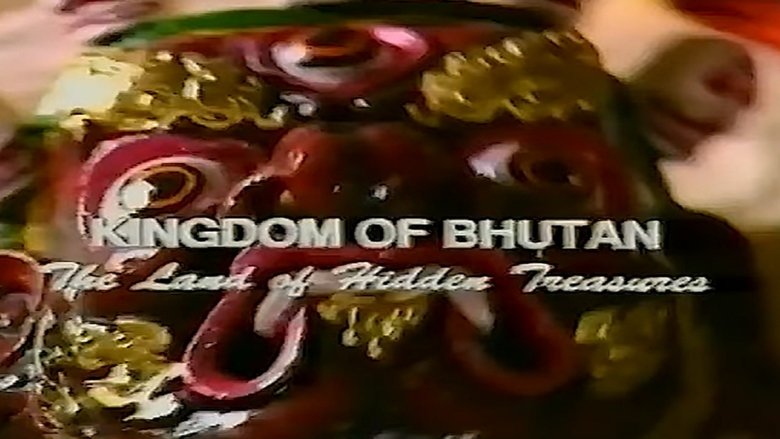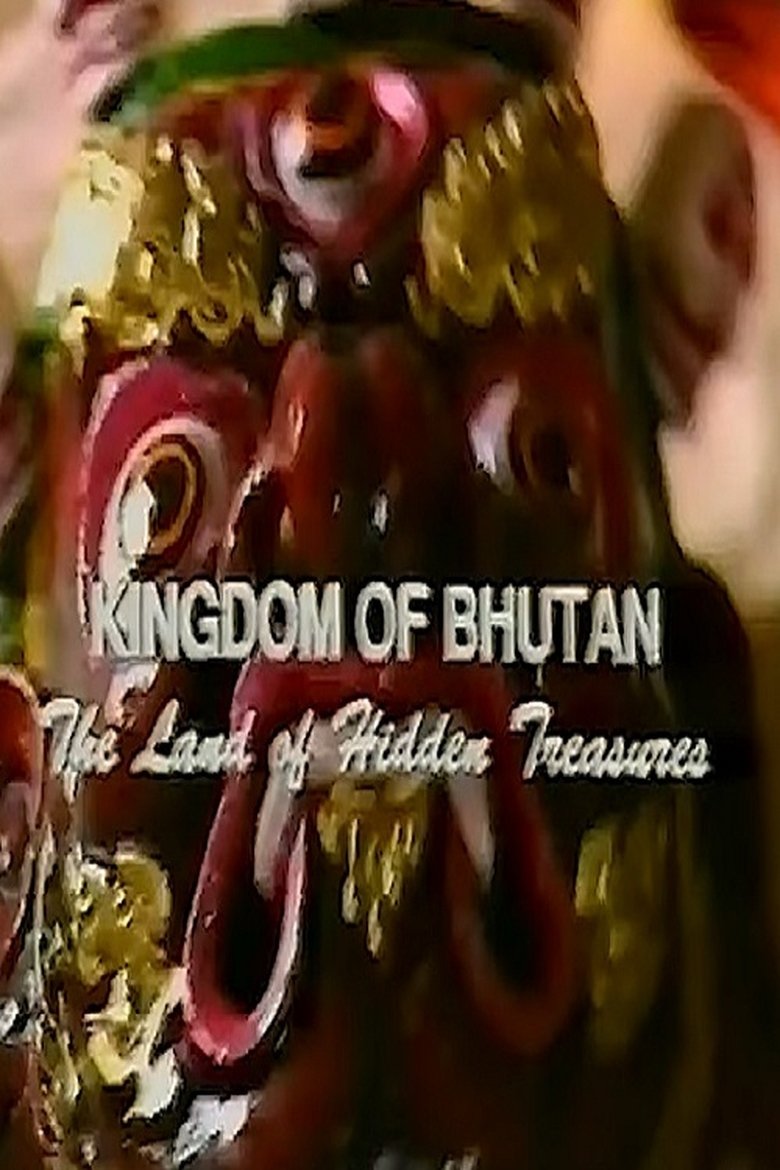Loading


Kingdom of Bhutan: The Land of Hidden Treasures
Genres
Documentary
Overview
A documentary video about the Kingdom of Bhutan.
Details
Budget
$0
Revenue
$0
Runtime
18 min
Release Date
1998-01-01
Status
Released
Original Language
English
Vote Count
0
Vote Average
0
Cast
Meet the talented actors who bring the movie to life.
Sonam Choden Dorji
Narrator
Similar Movies
Explore movies similar to this one that you might also enjoy.
8.0
The Dragon House
The Dragon House portrays the confrontation between tradition and modernity which the Kingdom of Bhutan is currently experiencing. This is done by means of two Bhutanese characters: a young Buddhist monk, heir to the local tradition, and the first disc jockey to dare to play House and Techno music in the small Himalayan kingdom.
2005-01-01 | en
0.0
Bhutan - Glücksland im Wandel
It was only in the 2000s that the population of Bhutan discovered television and the Internet, as well as the first democratic elections. Near the capital Thimphou, one of the fastest-developing cities in Southeast Asia, live some 20,000 nomadic yak herders.
2019-10-26 | de
0.0
Golden Globe - Bhutan
2013-10-24 | de
8.0
Agent of Happiness
The documentary team follows two happiness agents in their forties who spend a month and a half on the road twice a year, going door-to-door with their questionnaires in isolated villages in the Himalayas. The filmmakers undertake to provide an intimate insight into the daily lives and desires of Bhutanese people, and also seek the answer to the universal question of whether happiness can really be measured. Gross National Happiness promises a heart-warming journey into a mysterious, fairytale-like world, which is the exact opposite of the social order dominated by consumption and desires.
2024-07-12 | dz
6.3
Happiness
Peyangki is a dreamy and solitary eight-year-old monk living in Laya, a Bhutanese village perched high in the Himalayas. Soon the world will come to him: the village is about to be connected to electricity, and the first television will flicker on before Peyangki's eyes.
2014-01-17 | en
0.0
Crossing Bhutan
Bhutan is known as the last Himalayan Buddhist Kingdom and one of the happiest places on earth. 'Crossing Bhutan' tells the story of four veteran athletes and their journey to explore Bhutan’s enigmatic policy of Gross National Happiness by making the first 485-mile, border-to-border crossing of this isolated kingdom entirely by foot and bike.
2016-02-05 | en
0.0
1000 Hands of the Guru
Four monks, a royal scholar, and their American guru are fighting to save Bhutan's sacred arts while learning the art of letting go.
2016-11-08 | en
0.0
Lencha
After a tragic accident kills her parents and brother, teenager Samaya is sent far away to study abroad by her wealthy grandfather, her only surviving family. After she returns home a well-educated, beautiful young woman she resumes friendship with her two childhood friends- Sonam and Mindu. As Samaya and Sonam’s feelings for each other develop further, Mindu becomes increasingly envious and frustrated.
2018-06-27 | dz
6.9
Travellers and Magicians
A young government official, named Dondup, who is smitten with America (he even has a denim gho) dreams of escaping there while stuck in a beautiful but isolated village. He hopes to connect in the U.S. with a visa out of the country. He misses the one bus out of town to Thimphu, however, and is forced to hitchhike and walk along the Lateral Road to the west, accompanied by an apple seller, a Buddhist monk with his ornate, dragon-headed dramyin, a drunk, a widowed rice paper maker, and his beautiful daughter, Sonam.
2003-09-09 | dz
6.6
Fantastic Beasts: The Secrets of Dumbledore
Professor Albus Dumbledore knows the powerful, dark wizard Gellert Grindelwald is moving to seize control of the wizarding world. Unable to stop him alone, he entrusts magizoologist Newt Scamander to lead an intrepid team of wizards and witches. They soon encounter an array of old and new beasts as they clash with Grindelwald's growing legion of followers.
2022-04-06 | en
6.2
The Empty Man
On the trail of a missing girl, an ex-cop comes across a secretive group attempting to summon a terrifying supernatural entity.
2020-10-22 | en
7.4
Lunana: A Yak in the Classroom
A teacher, in search of inspiration, travels to the most remote school in the world, where he ends up realizing how important his job is and appreciating the value of yak dung.
2019-11-16 | dz
7.0
Honeygiver Among the Dogs
In the remote Bhutan, an undercover detective investigates the case of a missing Buddhist nun and falls into a risky alliance with his only suspect, an alluring young woman known as the village "demoness".
2018-02-16 | dz
4.8
Coral Dreamscapes: An Exotic Aquarium
Fascinating species bursting with color Gentle, meditative ocean water bubble away as exotic fish swim to the soft sounds of piano and strings. In this video, over 700 salt water fish will glide and drift across your screen. No feeding, no water testing and no clean up. It's as simple as hitting play on your DVD. Fascinating species bursting with color like you've never seen. Kick back and float along in the tidal pools of your very own trouble-free T.V. Aquarium. Turn your television into a coral reef teeming with underwater life.
2000-11-04 | en
10.0
Amicus: House of Horrors
For the first time on DVD, the Alpha Archives Collection proudly presents a two part feature length documentary celebrating the history of the Amicus Productions film company. Founded in the early 1960s by Americans Milton Subotsky and Max J. Rosenberg, Amicus produced some classic (now cult) horror movies, including Dr. Terror's House Of Horrors, The House That Dripped Blood, Tales From The Crypt, Asylum and From Beyond The Grave. Featuring interviews with key individuals who worked for Amicus (actors, directors, etc.), and with many rare photographs and production designs throughout, this documentary is a must-see for fans of British horror cinema.
2012-10-30 | en
6.0
As Pedras e o Tempo
Documentary short film on the city of Évora, Portugal. Usually regarded as the first film of the Portuguese New Wave.
1961-03-17 | pt
2.0
Man in the Glass: The Dale Brown Story
Born on Halloween, 1935, Dale Brown's fight for justice began the day his father walked out - two days before he was born. About how an overachiever from tiny Minot, North Dakota relentlessly fought his way to the top.
2012-05-08 | en
0.0
Winnie and Nelson: Portrait of a Marriage
Explores the deep bond between Nelson and Winnie and their marriage in the struggle against apartheid. An intimate portrait of their connection from the early years through to the dismantling of apartheid and Mandela's historic presidency.
| en
0.0
8 Arms to Hold You
An "Ock-umentary" exploring the character of Doc Ock and the way he as well as his tentacles were brought to life on the silver screen.
2004-11-30 | en
0.0
Angst spür' ich, wo kein Herz ist
Children from poor families recount experiences from their daily lives.
1998-10-25 | de